The State of Digital Imaging
by Wesley Fink on January 26, 2009 12:02 AM EST- Posted in
- What's New with Wes
January and February are anticipation months in the Digital Camera industry this year. Anything big is likely to wait until PMA in March to be announced. Manufacturers are consolidating product lines, reshuffling their point-and-shoot offerings, and dropping hints. With the worldwide economy in recession (or worse) things seem even slower than usual as the Digital SLR industry – which many thought was bullet-proof – is finally feeling the pinch of declining sales.
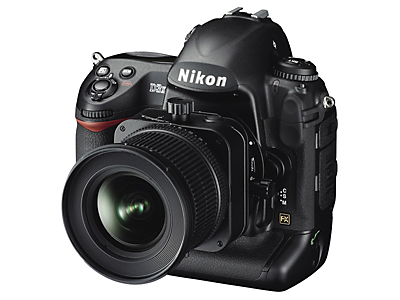
The last two big deliveries in the industry were both full-frame sensor cameras, with huge 24x36mm sensors with no crop factor at all for 35mm lenses. The Nikon D3x was shipped with a controversial $8000 price tag. It turned out to be a 24.5 megapixel Pro camera with a sensor manufactured by Sony "to Nikon specifications" with Nikon electronics and build quality. Like the Pro D3 the D3x features an integral motor and incredible ruggedness to stand up to anything a Pro might ask of the $8000 camera.
The Sony A900, with what is likely the same Sony base sensor, is selling for $2999. The Nikon D3x does have slightly lower noise at high ISOs (3200-6400) than the Sony A900, but some recent resolution tests show the Sony A900 and Nikon D3x a dead heat in resolution at lower ISOs. In the ISO range from 100 to 1600 (looking at raw data) the Sony A900 and Nikon D3x are neck and neck in noise, which just reiterates the impact of the base sensor on noise and resolution.
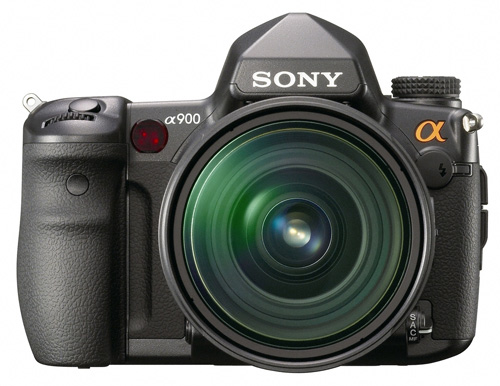
Nikon has done a great job with the D3X, but some wonder if the Nikon image processing and Pro build is worth the extra $5000? Even if we forget an A900 comparison the D3x is about twice the current $4200 price of the Nikon Pro D3, which is in almost every way but the sensor the same camera as the D3x. The D3 has a 12 MP sensor but goes to ISO 25600 instead of ISO 6400 and reaches 9 FPS instead of the 5FPS of the D3x. Nikon prefers to compare the D3x to Medium Format cameras with digital backs. In that arena the $8000 D3x looks like a tremendous bargain compared to the $20,000 to $30,000 Medium Format digital backs.
It took Sony a while to get into the D300 quality arena with their A700, which both use a sensor manufactured by Sony. Sony eventually reached their goal of comparable JPEG images with V4 firmware. We are left to wonder if a similar firmware update is coming for the A900 that will improve the less than spectacular JPEG engine. Performance is remarkably close to the D3x shooting RAW, but the Sony JPEG engine is certainly not the equal of Nikon's JPEG. With pricier full-frame models many may rightly wonder if in-camera JPEGs really matter since the cameras are more likely to be used in RAW mode than cheaper and less capable DSLRs.
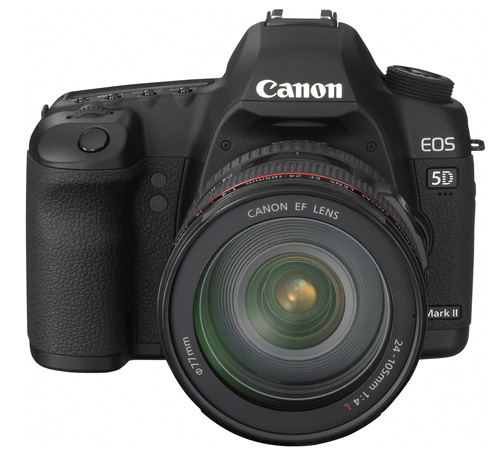
At the other end of the full-frame spectrum from the $8000 D3x the Canon 5D Mark II finally arrived after a 3-year wait. The new 5D2 instantly obsoleted Canon's own $8000 1Ds Mark III. Canon themselves proclaimed the 21.1 megapixel sensor in the 5D2 to be their best sensor, so it should be obvious that a 1Ds Mark IV should be arriving at PMA or soon thereafter.
It is interesting that Pixel-Peepers immediately found a “fatal” flaw in the 5D2, with black dots appearing to the right of blown highlights like Christmas lights and street lights in certain low light conditions. The Forums made a huge deal of it, ignoring all the incredible value Canon was delivering with the $2699 5D2. Canon recently released firmware that fixes the issue, and if you are a 5D2 owner you should definitely upgrade to the new firmware. Frankly we found you had to work really hard to set up a shot that would reveal the mysterious black spots on the right, but with the new firmware there is no reason to continue worrying.
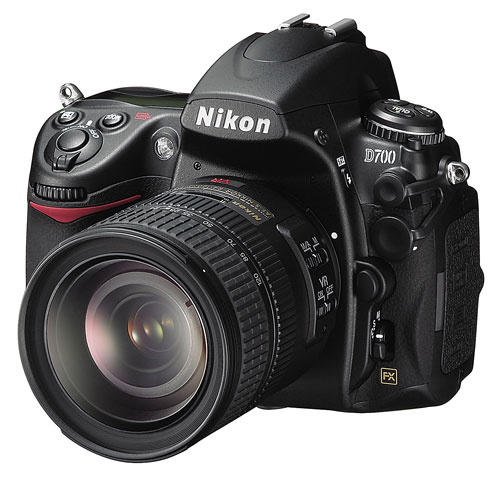
It should be clear to everyone by this point that the Pro DSLR is now full-frame. Even the top of the prosumer line is filled with full-frames, with the Sony A900, Canon 5D Mark II, and Nikon D700 all available for under $3000. Those prices will continue to drop and the next big full-frame is likely to come from Sony in a cheaper full-frame that may possibly be called the A800. With the Nikon 12 megapixel full-frame sensor looking low-res beside 21 to 25mp sensors the D700 price is dropping, and we would not be surprised to see a new lower priced Nikon full-frame coming in the near future as well.

One of the big events of recent months is finally getting recognition from the “important” photo sites. When we lauded the Panasonic G1 as the most interesting and desirable “entry” camera in our Holiday Digital Camera Buyers Guide, some criticized the selection as short-sighted. Since then Popular Photography has named the Panasonic G1 their "Camera of the Year" and dpreview has finally published a glowing review of the new G1.
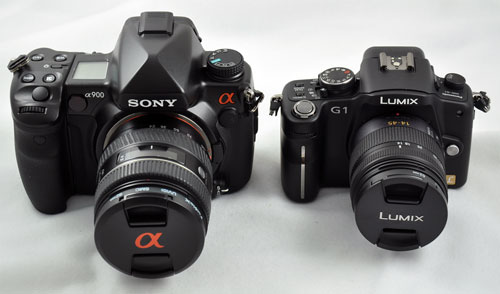
It appears some early critics of the G1 missed the point that the G1 was genuinely unique in the Digital Photography world – a world in which true innovation is very rare. The G1 is not as small as many would like, but the lenses for the camera are truly small. The whole micro 4/3 system also promises truly tiny interchangeable lens cameras with big sensors – which many have been clamoring for. Promise is the reason the G1 is exciting – more so than what it actually is. There is certainly nothing wrong with the product, as the G1 is a great camera, but just consider what is likely to come.
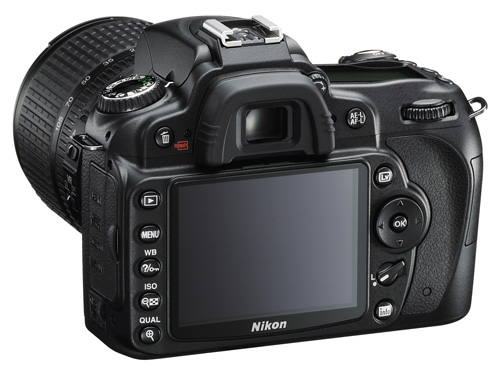
Perhaps the biggest promise of the Panasonic G1 is video. Nikon whet the appetite with their crude implementation of HD with no auto focusing capabilities with the D90. Canon took it further with true 1080p HD capabilities with slow focusing limiting the utility. Still the 5D Mark II is capable of stunning video with careful planning.
Panasonic tells us Micro 4/3 was developed with video in mind, and the super fast multi-point contrast detection sensor in the G1 will be an exciting base for a truly capable full HD interchangeable lens big sensor still camera with no-compromise full HD movie capabilities. The biggest question right now is not if we will see a micro 4/3 that does video, but rather when that camera will arrive. Is PMA too soon?
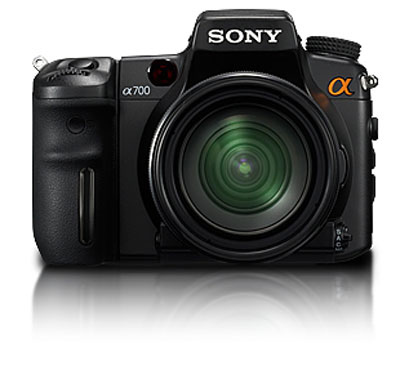
With Canon, Nikon, and soon Panasonic/Olympus in interchangeable lens HD video as a still camera option, the market is left to wonder where Sony might be. As a huge player in video and now number 3 in the DSLR market, most assumed Sony would be the first with video capabilities in this market. That hasn’t happened, but if I were a betting man I would bet Sony will have some video surprises at PMA. Everyone expects an A700 replacement to be announced this March, and it might just be the missing video link.
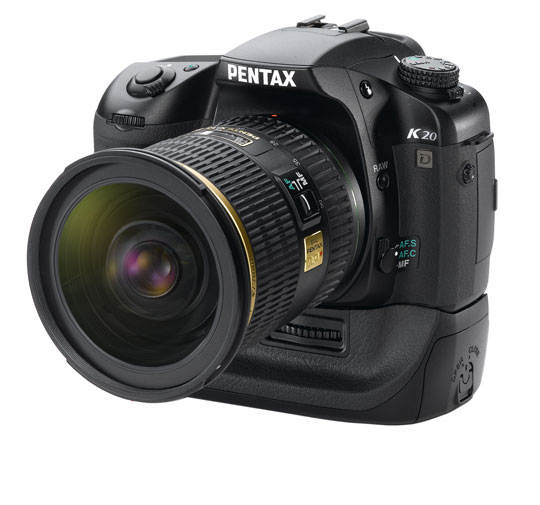
Then there is the question of Pentax. The 14.6 megapixel K20D is one of the most capable DSLR cameras we have tested in the past year, and yet it gets consistently ignored on many photography review sites. Today, with a list price dropped to $999 and a street selling price of about $750 for the K20D body the camera is truly an incredible value. This is particularly true when you consider the environmental sealing lavished on the K20D – which is largely missing on others in its class.
The K20D solidified the marriage of Pentax and Samsung with the innovative Samsung 14.6 MP CMOS sensor. Will Pentax finally upgrade their very accurate but slow 11-point AF module? Will we finally see a Pentax that can do more than 3 FPS? Will Pentax survive this economic crisis? If Pentax does survive, we know that Samsung, along with Sony, is a patent holder on the process used to produce full-frame CMOS sensors such as the Sony 24.6 megapixel sensor. Knowing that we have to wonder if Samsung will also choose to play in the full-frame arena.










40 Comments
View All Comments
melgross - Monday, January 26, 2009 - link
Actually, the 50D is better. It's a complex question though.If you bring the rez down to what is in the D300, the noise is the same. If you bring the rez down to what is in the 40D, its better.
At the same print size, which is the only fair comparison between cameras, a higher rez image will look less noisy than a lower rez one, if the per pixel noise is the same. If the higher rez image has a bit more per pixel noise, then it could very well look the same.
finbarqs - Monday, January 26, 2009 - link
Many considered the 5D Mark 2 not a full blown pro camera with its limited autofocusing ability, and it's body construction (not weather sealed). They would consider the D700 a pro camera as it has everything that canon lacks in the 5D mk2 (51 points, horizon leveler, environmental seals, etc.) However, I guess it really depends on what you would consider "pro" grade.strikeback03 - Monday, January 26, 2009 - link
Probably depends on what field that pro works in. For studio or wedding photography (largely indoor and slow-paced) environmental seals and focus tracking are not huge issues. For travel/journalism, those factors become much more important.jpeyton - Tuesday, January 27, 2009 - link
For weddings (especially receptions), you want a fast, responsive camera with excellent low-light autofocus. Receptions are anything but "slow-paced". You also want manageable file sizes when you have to sort and process a thousand images from a wedding/reception.21MP in a $2700 body is attractive for studio work and landscapes, but only a very small percentage of wedding photos are ever printed larger than 8x12.
strikeback03 - Tuesday, January 27, 2009 - link
Maybe a cultural thing. I have never done a reception that had exactly high action. Nothing to compare to, say, HS basketball.BiscuitMonster - Monday, January 26, 2009 - link
Great to see Pentax made your list! I am one of the few eagerly anticipating Pentax's next move - and really hope they manage to weather the storm.feraltoad - Monday, January 26, 2009 - link
It would be a shame to lose Pentax. I love my k200d. I don't know why they don't get more attention considering what you get for the price.Samus - Monday, January 26, 2009 - link
I still use a K100d and couldn't recommend a stronger camera to a beginning photographer. It's menu system is easy to understand, lens compatibility is vast, street price is low and durability is exceptional. I can't wait to get a K200 someday; my buddy just ordered one for $850 (kit with lens!) and I have a feeling as soon as I use his I'm going to want one of my own.These camera's are too underrated. It seems like everything is Sony this, Nikon that...
dr4gon - Monday, January 26, 2009 - link
Great roundup, can't wait to see what Sony has in store for PMA which usually comes in January (now in March) can't come soon enough!Lord 666 - Monday, January 26, 2009 - link
Bah, reads more like a soap opera or a serial cliff-hanger.No new news to report here.